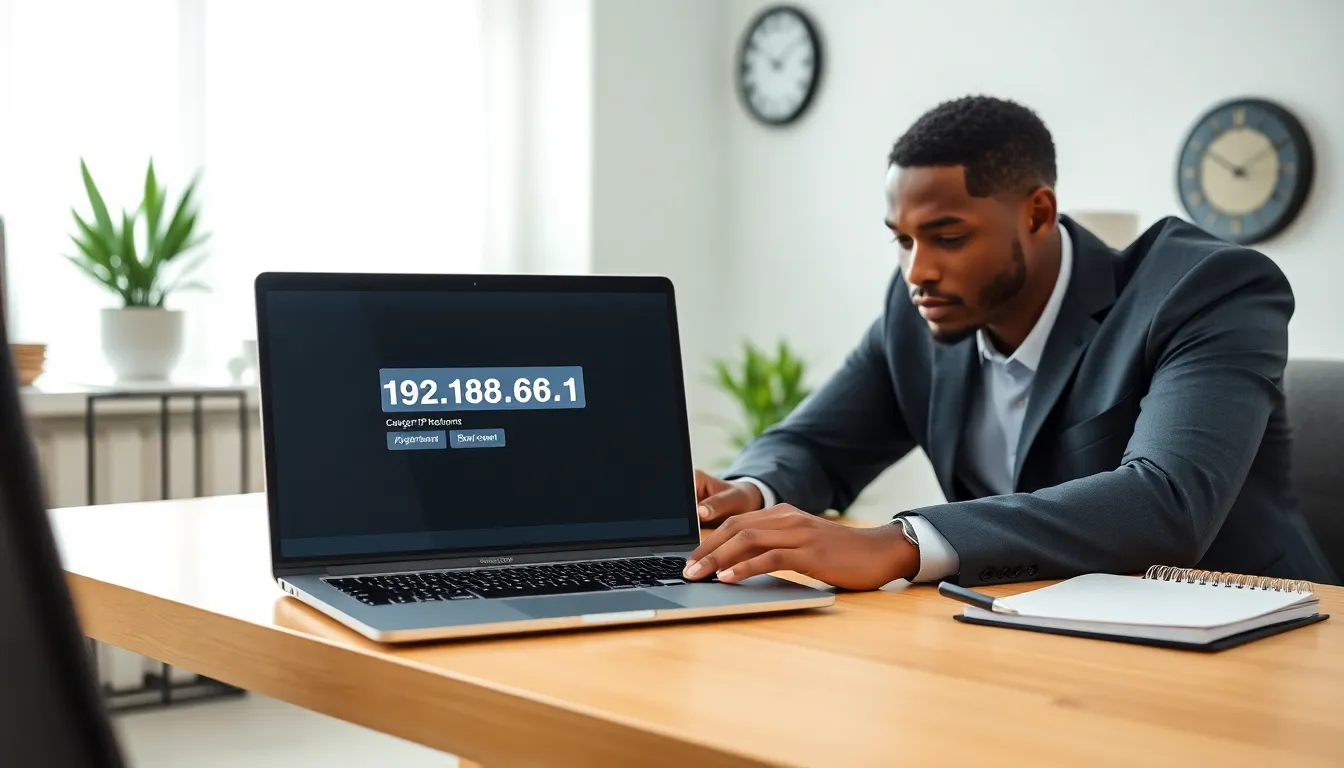Have you ever stared at the back of your router and wondered what that shiny little gateway IP means? Well, welcome to the mysterious world of 192.168.68.1, your router’s default gateway. Understanding this little number can be the difference between a functioning home network and being at the mercy of endless buffering and disconnected devices. So, whether you’re setting up a new network or troubleshooting an existing one, let’s decode this IP address together, after all, why not have a little fun while making sense of tech?
Table of Contents
ToggleWhat Is 192.168.68.1?

192.168.68.1 is a private IP address typically assigned to routers within a local network. It’s akin to a home address for your internet-connected devices, allowing them to communicate with each other. This specific IP address falls within the ‘192.168.x.x’ range, which is reserved for private networks. Most importantly, it’s commonly used by certain router manufacturers, including many models from TP-Link, D-Link, and others, as their default gateway.
When you enter this IP into your web browser, it can take you to your router’s login page. From there, you can manage it, configure settings, and handle various tasks like setting up Wi-Fi credentials or tweaking security settings. But hang on. Even though being private, anyone on your local network can access it, which emphasizes the importance of secure passwords.
Common Uses of 192.168.68.1
The IP address 192.168.68.1 serves multiple essential purposes in network management. Primarily, it acts as a gateway for devices to connect to the internet through the router. Users often rely on this IP to:
- Login to Router Interface: It provides access to various router settings.
- Troubleshoot Connection Issues: When internet connectivity falters, addressing settings via this IP is a common first step.
- Change Network Configurations: Users can modify DHCP settings, change passwords, and set up port forwarding.
It essentially acts as the command center for your home network, enabling personalized configurations and active management. This flexibility helps ensure optimal performance for all devices connected within the same network.
How to Access the 192.168.68.1 Router Interface
Accessing the 192.168.68.1 interface is straightforward, even if you’re not tech-savvy. Just follow these steps:
- Connect to Your Network: Ensure your device (laptop, smartphone, or tablet) is connected to the Wi-Fi or via Ethernet to your router.
- Open a Web Browser: Launch your favorite browser, be it Chrome, Firefox, or Safari.
- Enter the IP Address: Type
http://192.168.68.1into the address bar and hit enter. - Login Prompt: You should now see a login page. Enter the admin credentials. If you’re unsure, the default username and password could be ‘admin’ for both fields or they may vary, check your router’s documentation.
- Explore Settings: Once inside, you can navigate through various settings and options to customize your network as you see fit. Remember, though, to tread carefully, certain configurations can impact your network performance.
Troubleshooting Access to 192.168.68.1
Sometimes, accessing the 192.168.68.1 interface might feel like trying to crack a safe. If you’re running into issues, here are some common ones and how to resolve them:
- Incorrect IP Address: Double-check that you typed the correct address: typos happen to the best of us.
- Connection Issues: Ensure your device is connected to the network. If you’re on Wi-Fi, try switching to an Ethernet connection or vice versa.
- Firewall Settings: Your device’s firewall might block access, so temporarily disable it and try again.
- Router Restart: Restarting the router can solve many tech-related problems. Turn it off, give it a moment, and turn it back on.
These steps should help you regain access swiftly and keep your networking woes at bay.
Configuring Router Settings via 192.168.68.1
Once logged into the 192.168.68.1 interface, users can configure several settings essential for optimizing their network. Here are some common configurations to consider:
- Change Wi-Fi Name and Password: This personalization helps secure your network and make it easy to identify.
- Set Up Guest Networks: Creating a separate Wi-Fi network for guests can keep your primary connection more secure.
- Adjust DHCP Settings: This can help manage how IP addresses are assigned within your network, boosting performance.
- Update Firmware: Keeping your router’s firmware up-to-date ensures you benefit from the latest features and security patches.
These configurations aren’t just for convenience: they can significantly impact your network’s security and efficiency. After all, who doesn’t want a faster streaming experience and fewer dropped connections?
Security Considerations When Using 192.168.68.1
With great power comes great responsibility, this adage holds true when managing your router settings via 192.168.68.1. Here are essential security measures to consider:
- Change Default Credentials: If you haven’t done so already, changing the factory-set username and password can prevent unauthorized access to your network.
- Enable WPA3 Security: Use this advanced encryption protocol for your Wi-Fi network. If unavailable, opt for WPA2 if your router supports it.
- Disable WPS: Wi-Fi Protected Setup may seem convenient, but it can also be a vulnerability. Consider turning it off to enhance security.
- Regularly Monitor Connected Devices: Regularly check which devices are connected to your network. If you spot something suspicious, investigate further.
Prioritizing security not only protects personal data but also ensures a reliable network environment.



